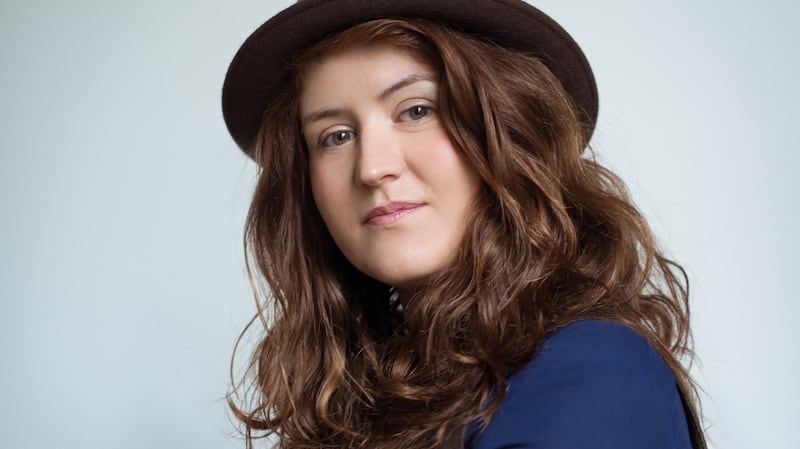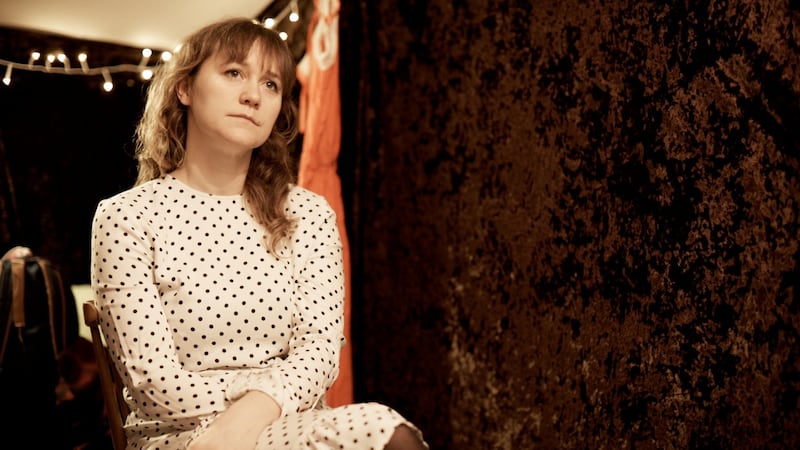Light as a symbol of hope is a striking motif that features in this year's Earagail Arts Festival programme with reassuring frequency. Its blended programme, with a significant increase in in-person events, marks a significant turn when compared with last summer's festival. Artistic director, Paul Brown, is a man on a mission to find new ways to bridge the gap that emerged during the pandemic between artists and audience.
“Last year’s programme, which was largely online, gave us an important opportunity to promote the artists, but we wanted to get back to presenting in-person events as much as possible,” he says. “This year we’re managing to host, with much smaller capacities, a lot more live and in-person events than online. A lot of the artists faced these challenges with what they’re good at, which is ingenuity and ambition, and they’ve looked at ways of presenting their work in a new manner, or else working on new work for this particular time we’re living in.”
Earagail Arts Festival has a reputation for inventive programming and, while this year's three-week event busies itself with finding ways of connecting with audiences at the very least on an arm's length basis, in the background there are more long-term projects brewing with Rajasthani and Nepalese artists. Projects in evolution are the lifeblood of festivals such as Earagail, where artistic directors have one eye trained on the current programme and the other sharply surveying the future, supporting diverse artists to come together in ways that can refresh our thinking and challenge our preconceptions.
One of Donegal’s trump cards is its extraordinary landscape, and Brown is happy that this year’s programme is casting its sights on its rugged coastline in particular.
“A big part of what Earagail Arts Festival has done over the years is draw from the landscape,” Brown says, “and obviously the landscape provides so much inspiration for artists who come here too. We’ve been looking at how to use technology in a way for people to enjoy art, but also to learn about the folklore of place and the ecology of place, and to be able to experience new work in a way that is accessible to them. Lighthouses are symbols of hope and light. So some projects have been looking at specific places and locations, and the stories associated with them.”
Lighthouse beacons
Three lighthouses feature in the programme this summer. Inishowen, Fanad and Tory Island lighthouses: beacons of hope, come rain or come shine.
Dani Gill is a poet and a curator whose breadth of vision has landed her a major project on the Wild Atlantic Way.
“I won a tender to deliver a literary tourism model for the Wild Atlantic Way in association with the Western Development Commission,” she explains, with an enthusiasm that reflects her sense of adventure as she’s been conjuring up different events across six coastal counties. “It’s an Irish model of literary performance along the coast. I chose lighthouses, because when I looked at the map, I saw them on peninsulas and promontories and I was interested in mirroring the nautical miles out to sea inland and creating a zone where an artistic project would emerge. Then I’ve been partnering with people locally to discern what that might be, but with the lighthouse as a focal point.”
Fanad lighthouse is a particularly alluring location for one of Gill's projects. Its stark location, with coastal currents that swirl with implosive energy is an ideal location for film-maker and soundscape artist Laura Sheeran and writer Annemarie Ní Churreáin.

“I’ve been drawn to lighthouses, and To the Lighthouse by Virginia Woolf is one of my favourite books,” Gill explains. “It’s really about a personal journey: being drawn towards something. Fanad lighthouse is quite isolated and it’s the quietest peninsula in the county. We were struck by how self-sufficient people are but we were also interested in a lot of the stories of loss and disappearance. Fanad lighthouse was built in response to a massive drowning. A huge British ship went down and a lot of people died and that was why the lighthouse was put up.
“There were some really tragic stories of children and of men who left the lighthouse to go inland, and disappeared in the bogs. Anne Marie was saying it was as if there was a bubble around the lighthouse and once they left that bubble, it was hard to navigate, so she’s writing about protection. She’s looking at Irish words to be married with a film by Laura. And she wants to focus on female voices from the area. There have never been any female lighthouse keepers, but women married into these situations and many found themselves isolated in these points.”
For Gill, the real energy lies in the unexpected hairpin bends that artists take when they collaborate.
“For me as a curator, I think that literature is magical,” she says. “Seeing the world through the eyes of a writer is special. We get that experience of visual art a lot, but writers are artists too, and they have a lot to bring to any process where stories and mood and atmosphere exist. I also think that this is a really great way to introduce people to contemporary writers. People who may never pick up Anne Marie’s poetry book, but then discover her at Fanad Head. It’s been really exciting.”
Intimate insights
Brigid Mae Power is a Galway singer-songwriter whose work has drawn comparison with that of Annie Briggs and Bill Callahan, among others. Truth to tell though, there is no one quite like Power, and her last album, Head Above The Water, released in June of last year, is a meditative collection of intimate insights into life's fleeting moments. She will perform at Fanad lighthouse in an evening of music curated by Radio na Gaeltachta's Cian Ó Cíobháin, along with Kerry rapper Súil Amháin and electronic/ambient artist Shammen Delly.
Power acknowledges her nervousness in advance of this gig, not having performed live in some 20 months. The pandemic has hit her hard, she admits.
“It was good in a strange way,” she says, “because I think there was something wrong with the touring paradigm anyway. Lots of musicians were really exhausted and playing for not much money, so when that stopped, there was initial relief. I was really sick of walking through airports with loads of guitars and bags hanging off of me. And my husband and I both slowed down. But at some point it just felt unnatural. I’m struggling with it now. I really need to sing for people. If I could choose to be a recording artist or a live performer, I’d always choose live performer because that’s what I do. So it’s been really hard.”

Power’s influences are as broad as they are deep.
"I grew up in London until I was 11 and then we moved to Galway. We lived in a big London-Irish scene, with lots of big singers," she recalls. "Singing was a big thing. That was my first port of call. I've gone everywhere taste-wise. Bob Dylan, Joni Mitchell and Aretha Franklin have all been big influences, but people like Dolores Keane have really inspired me. When I was younger, I used to struggle to find a style and then I just realised I just had to sing as myself. I have traditional singing in me but it comes out a little skewed. I just close my eyes and be myself as much as I can and that's what feels best for me."
Her songs are as bare naked as songs can ever get, mirroring a process that’s totally organic and not tethered to any time schedules.
“I always have five or six notepads going, and so when I just get a line, I write it down,” she says. “I’m a huge procrastinator and I feel like I’m always running away from songs and then I face myself and I write. I don’t wake up trying to write. That just doesn’t work for me. I just have to appreciate it when it comes. I’m lucky that I don’t worry about timing or writer’s block. Something will come when it comes. I usually have a melody going around in my head and sometimes words will come to me when I’m doing that or I’ll look in my notebooks for suitable lyrics. I leave a lot to chance I think. But really, it’s always been about quality and not quantity for me.”
Power’s husband, Peter Broderick, is an American musician who’s a member of Danish band Efterklang and she’ll be joined by him, and by Ye Vagabonds’ Brían Mac Gloinn on bouzouki and by Elva Carroll on bass. July 24th can’t come soon enough for her. And the intimacy of Fanad is a huge attraction for her too.
“It puzzles me when I hear all the talk about getting thousands of people back in an arena,” she says. “What about the small gig?”
Paul Brown is clearly delighted at the return to live performance, albeit socially-distanced and carefully curated.
“I think that you don’t know what you’ve got till it’s gone,” he says. “There’s such an appetite for live performances and wanting to experience things in person. Artists want to get back to having a physical audience, because it’s so important for their work. I think that mix of online and in-person events is here to stay. But for a festival, it’s essential for people to be in a place, even if they’re two metres apart. It’s much more of a multisensory experience.”
Earagail Arts Festival runs from July 4th-25th












